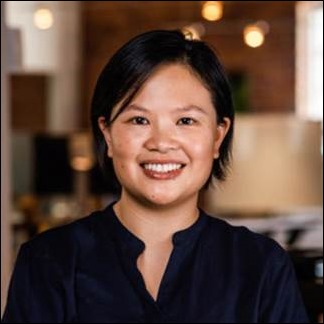Katie the Intern 1/22/21
Hi, HIStalk! This week’s column is a Q&A with Kyna Fong, PhD, CEO and co-founder of Elation Health. This is the first column I’ve conducted in a written question and answer format. We touched on Elation Health, the evolution of primary care, COVID-19’s long-term impacts, and more. This column is a bit longer than usual, but I hope you find it to be an impactful and insightful read!

Dr. Fong’s journey with healthcare began at a young age, as her father served as a physician in Canada and the United States. As a teenager, Dr. Fong helped with in-house clinical services, which inspired her to become an assistant professor of economics at Stanford University. She and her brother then started Elation Health to deliver technology for independent primary care practices.
Elation Health is a platform for primary care success, serving over 15,000 clinical users for their data management. The EHR is a collaborative, clinical-first system that supports physicians by managing clinical workflows, practice management, patient experience, and quality care.
“Clinical-first is the radical idea that the quality of patient care matters and that supporting physicians is the path to that quality,” Dr. Fong said. “Our systems aren’t about upcoding, billing, and RVUs at the sacrifice of care. They’re about strengthening the patient-physician relationship and enhancing the craft of primary care.”
I asked Dr. Fong about technology that goes into running an EHR with a clinical-first outlook. Elation is a SaaS or cloud-based platform that relies on internet access. APIs (application programming Interface, noted) work behind the scenes to run data analytics and visualize information in real time. Dr. Fong said that Elation keeps the technology behind the scenes so users can focus on quality primary care.
From Dr. Fong’s perspective, primary care and its evolution is the future of healthcare, and healthcare IT and holds the key to unlocking sustainable healthcare in the US. She cited studies that prove good patient-provider relationships lead to reduced healthcare costs and better livelihood. In this 2016 study, “Gordon and Beresin asserted that poor outcomes flow from an impaired doctor-patient relationship.” This understanding also leads to the conclusion that better healthcare relationships save time and money.
“That relationship drives reduced hospitalizations, less duplication of procedures, fewer medical errors, better prevention, increased chronic disease reversal, and more family involvement and trust in health decisions,” Dr. Fong said.
The application of primary care is becoming more digital every day, growing at an exponential rate through telehealth’s application due to COVID-19. But not every area of the United States has been able to keep up with this digital move. Rural areas often have a higher population of underserved communities, and mom-and-pop healthcare practices are the only services available for miles. Dr. Fong says traditional EHR vendors require significant resources and technical support to successfully implement their services, and without large subsidies (which usually go to larger health systems), rural clinics struggle comparatively. Improving access and providership to underserved areas is important to assist rural practices in making the much-needed move to digital care.
“These practices are so deeply invested in their communities,” Dr. Fong said. “Our goal is not only to see them survive, but to help them thrive, be recognized for high-quality patient care, and be paid what they deserve.” She believes that these underserved areas host tremendous opportunity for improvement, and with support, can begin to play catch-up in their digital development. I asked Dr. Fong what could be done to support rural areas and health systems in the switch to electronic records and how long would this take.
In Elation and Dr. Fong’s experience, the answer lies in asking providers what they need and how they best tailor healthcare application to their communities. She said most rural providers and systems want “a healthcare structure that recognizes they are small businesses and not mini hospitals.” They want a system that reduces administrative burdens, offers purpose-built technology that is easy to develop and implement, makes data sharing and collaboration with larger systems easier, completes parity in pay for both in-person and digital / virtual healthcare in the pandemic, and offers support and pathways for moving to value-based care.
The move to value-based care is also part of the problem in the evolution of primary care. Urban areas can sometimes have an easier time moving from FFS to VBC, but Dr. Fong tries not to see rural versus urban settings in this case. She views the challenge as being “more from the limited resources available to a small practice versus a large system, and the heavy financial and technical lift required of many health IT vendors’ legacy solutions to support alternative payment models.” Dr. Fong noted that smaller practices have a harder time getting the attention of payers to be able to invest in the shift to VBC. But for both large and small healthcare systems, monetary struggles and unmet incentives (such as reimbursement for VBC) can often hinder the move from a comfortable FFS model.
As seen throughout the pandemic, the move to digital care can be done quickly and effectively. COVID-19 has in some ways leveled the playing field for the move towards value-based care. Primary care providers and their ability to practice have been supported by financial innovation to keep them afloat for their patients, Dr. Fong said.
“We’ve seen big moves toward capitated and value-driven agreements for independent practices offered by payers across the country,” she observed. “The pandemic showed us starkly that the specialty-driven, fee-for-service model of healthcare fails to keep patients healthy when it really matters.”
Other surprising benefits of COVID-19’s presence have been technological advances and transitions. Movement to telehealth technology like Zoom and video-based platforms and the integration of these systems into EHRs were enhanced by the pandemic. This helped practices adopt new workflows to increase their treatment ability and reimbursement. She also said the shift towards telemedicine showed the world how quickly medicine can evolve when given the right incentives and support.
“Primary care has a massive role to play in our national recovery from this pandemic in the years to come,” Dr. Fong said.
Overall, the development of primary care is happening right before our eyes, she believes. Delivering the best possible outcome while also reducing cost of care are leading drivers in primary care’s evolution, and the pandemic has helped fuel that drive to make the switch faster and become a higher priority. Telemedicine, slowing the spread, and vaccine development are all just examples of the good that primary care does and glimpses into the future of its application.
Lastly, Dr. Fong expressed her gratitude to those providers who have served the masses during this pandemic. “I see their sacrifice and their resilience, from practices in our community and my own dad’s clinic. Along with appreciation, they deserve support in helping build our country’s healthcare future.”
__
That’s it, HIStalk! I’ve got some exciting ideas for some virtual interviews coming up, so if you have interest in watching 10-15 minute interviews or listening to some of my columns from a podcast POV, let me know! As always, I appreciate you and thank you for letting me learn about this industry.
Katie The Intern

Email me or connect with me on Twitter.


I'd never heard of Healwell before and took a look over their offerings. Has anyone used the products? Beyond the…